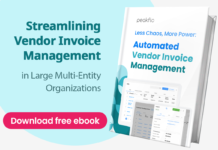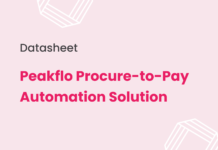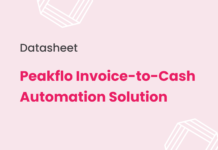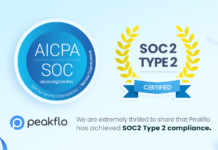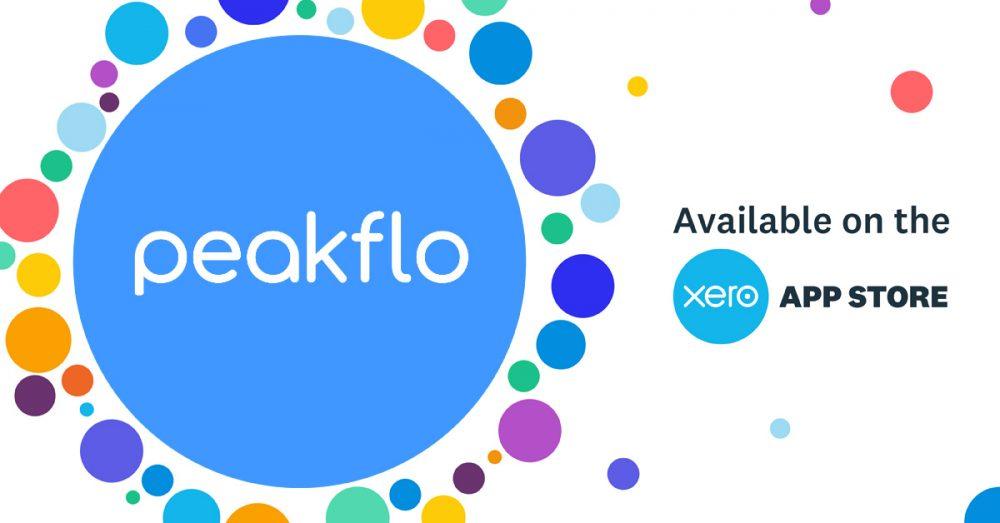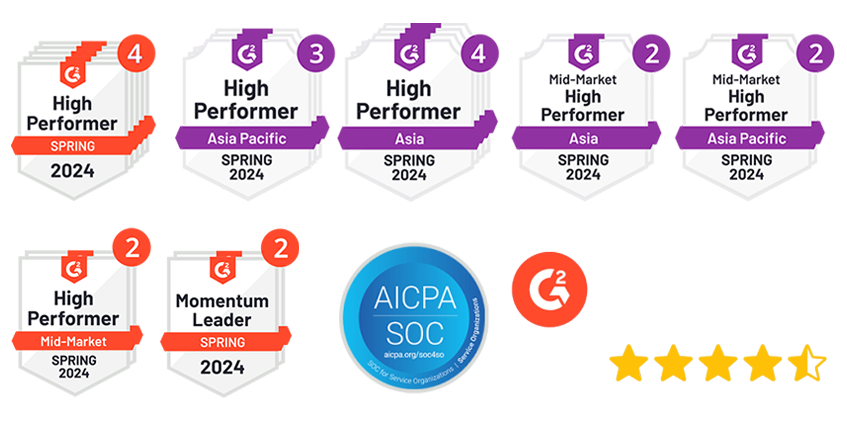Optical Character Recognition or OCR is a technology that enables the conversion of various types of documents, such as scanned paper documents, PDF files, or images captured by a digital camera, into editable and searchable data.
By implementing OCR for invoice processing, businesses can vastly improve the accuracy and efficiency of their accounts payable management. Automated accounts payable workflows powered by OCR can help prevent delayed payments and other
Moreover, OCR in finance can assist in regulatory compliance, risk management, and fraud detection, allowing for a more accurate and timely analysis of documents.
In this article, we will explore the meaning of invoice OCR and how optical character recognition can revolutionize your business’s financial processes and enhance overall efficiency.
What is an Invoice OCR?
Invoice OCR refers to the technology that automates the extraction of text information from invoices. It enables the conversion of scanned, photographed, hand-written, and paper-based invoices into machine-readable data, streamlining the process of data entry, reducing paper consumption, and enhancing efficiency in financial and accounts payable workflows.
OCR for invoices analyzes the shapes, patterns, and arrangements of characters in a document and translates them into machine-readable text. It is commonly used to digitize printed documents so that their content can be electronically edited, searched, and stored which greatly benefits organizations that need to process and analyze large data sets.
How Does Invoice OCR Work?
OCR solutions have made this technology more accessible, allowing users to quickly and easily upload their scanned documents or images and receive editable text in return. This has significantly simplified the process of extracting information from various document types, including invoices.
Invoice OCR, in particular, is a valuable application of OCR technology. It enables the swift and accurate capture of invoice details, digitizing crucial information for seamless database entry. In less than 30 seconds, essential data such as invoice numbers, names, addresses, and prices can be extracted and made available for further processing or analysis.
Now, compare that to the time it will take to capture data manually. Manual data entry can take you up to 72 hours to process a vendor invoice. If you want to cut your invoice processing time by half, incorporate OCR into your accounts payable process using robust accounts payable software.
Where Is OCR Used in Finance Operations?
OCR technology, particularly optical character recognition software, is utilized across a wide range of industries. Its implementation in finance and accounting proves beneficial due to the need for accuracy and efficiency in financial management.
A key area where you can employ OCR in finance and accounting invoice processing. Using invoice OCR, automatically extract essential information, such as vendor name, invoice number, date, and amount, from an image or a scanned invoice.
This accounts payable automation enables faster and more accurate reconciliation of payments, leading to improved cash flow management and overall financial stability.
Another application of OCR, specifically OCR image-to-text conversion, in finance and accounting is the digitization of financial statements, reports, and other critical documents.
By converting an OCR image or document into an editable and searchable format, organizations can easily access, analyze, and share financial data with relevant stakeholders, facilitating better decision-making and improved regulatory compliance.
Additionally, OCR technology plays a significant role in fraud detection and prevention, as it can help identify discrepancies or irregularities in financial documents, allowing organizations to take timely action and mitigate potential financial risks.
Key Features of Invoice OCR Software
Invoice OCR software has become increasingly popular among businesses in recent years thanks to the following features:
- Automated data extraction
- Machine learning capabilities
- Multi-language support
- Automated bill to purchase order matching
- Customizable workflow
Automated Data Extraction
This feature allows online invoice OCR technology to automatically recognize and extract essential information from scanned or digital invoices, such as invoice numbers, names, addresses, and prices. It enables the capturing of line item details including descriptions, quantities, and prices. By utilizing invoice OCR technology, businesses can process various document formats, including OCR PDF files, with ease.
By automating this process using online OCR tools, businesses can significantly reduce manual data entry errors and save time, leading to improved efficiency in the accounts payable and receivable processes.
Machine Learning Capabilities
The best invoice OCR software employs advanced OCR technology and deep learning algorithms to continually improve its accuracy in recognizing and extracting data from invoices. The sophisticated OCR algorithm is designed to adapt and learn from processed documents.
As the software processes more invoices, it learns to identify patterns and adapt to variations in invoice formats through deep learning techniques.
This means that the more you use the best invoice OCR software, the more accurate and efficient it becomes, ensuring optimal results for your business and enhancing your overall financial management capabilities.
Multi-language Support
Invoice OCR software supports multiple languages, enabling accurate extraction of information from invoices in different languages. Additionally, it can adapt to various date formats, currency symbols, and other region-specific elements. This ensures the software can effectively process invoices from around the world, accommodating diverse linguistic and formatting requirements.
Automated Bill to Purchase Order Matching
Invoice OCR software streamlines the bill to purchase order matching process, simplifying a traditionally intricate task. With advanced OCR capabilities, this software efficiently extracts relevant information from invoices and POs. The technology ensures precision in recognizing key details such as invoice numbers, dates, and line items.
By automating the bill to PO matching, businesses can significantly reduce manual effort and errors. The OCR software swiftly compares the extracted data from invoices with corresponding PO details, facilitating seamless reconciliation. This not only enhances accuracy but also accelerates the overall matching process, enabling organizations to maintain tighter control over their financial workflows.
Customizable Workflow
Customizable approval workflows, combined with automation, are essential components of invoice OCR software. These features allow businesses to tailor the software to their specific needs and preferences, ensuring seamless integration with existing financial processes while maintaining high levels of accuracy.
Customizable approval workflows enable you to determine how extracted data is processed, routed, and stored within the web app, allowing for greater control over your financial management.
By leveraging automation and configuring the software to match your unique requirements, you can optimize the entire invoice processing workflow, resulting in improved efficiency and productivity.
Why Use Invoice OCR In Your Accounts Payable Process?
Accounts payable automation is now becoming more prevalent than ever. Thanks to powerful accounts payable software, businesses can 2x their AP performance. Doing that can also have a significant positive impact on business cash flow control.
Using accounts payable software featuring an OCR function is one of the best decisions to make for your AP department. Let’s look at a couple of reasons why:
1. Digitize Bills
An invoice OCR solution lets you create a more seamless AP process by digitizing your invoices. It allows you to convert your scanned invoices into machine-readable files. And because the software can understand all the data, you can say goodbye to manual entry into your database.
OCR reduces dependence on physical paper documents by digitizing and extracting information. This not only saves physical storage space but also contributes to environmental sustainability.
2. Get a Speedier Invoice Processing
When you digitize bill processing, you can enjoy a much faster workflow thanks to optical character recognition invoice processing. Remember that it takes 1 to 3 days to process an invoice. Automating your process to eliminate monotonous work can significantly reduce this time.
This technology can automatically read and extract data from your invoices, which can save you a lot of time and effort. In addition, it can also help you to avoid errors and improve your overall efficiency.
There’s a reason why many companies, big or small, are turning to accounts payable automation. Implementing one into your business can decrease invoice processing time by 73%. No more delays, lengthy invoice approvals, and manual data entry.
3. Cut Costs
Errors can contribute to higher average invoice processing costs. You can almost expect human errors to follow suit whenever manual work is involved, regardless of how experienced your team may be. Errors like keying in the wrong invoice number or address can lead to delays.
Moreover, invoice OCR helps in maintaining compliance with regulatory requirements. Accurate and consistent data extraction ensures that financial records align with compliance standards, reducing the risk of penalties and audits.
You can process invoices effectively without errors using a powerful automation tool to empower your finance team. You’ll also get notifications when your OCR invoice doesn’t comply with the standards.
4. Reduce Errors
Errors can contribute to higher average invoice processing costs. You can almost expect human errors to follow suit whenever manual work is involved, regardless of how experienced your team may be.
Errors like keying in the wrong invoice number or address can lead to delays. In the worst cases, it can even affect vendor relationships. When you digitize bill processing with OCR, you can eliminate these errors from human intervention.
5. Rely on Flexibility
Optical character recognition is a great way to quickly convert your documents into editable and searchable content. Now you can edit your documents using different platforms or formats like word processors, spreadsheets, PDFs, or your custom database. This allows you to work with the format that best suits your needs and makes it easy to share your work with others.
Thanks to OCR-enabled accounts payable software, you’ll gain an added flexibility that contributes a lot to your end-to-end payable process. With this software, you can connect to your organization’s network from anywhere, which makes it easier to manage your accounts payable processes.
Additionally, the OCR software can help you automate many of the tasks associated with accounts payable, such as creating and sending invoices, tracking payments, and reconciling accounts. This can save you a considerable amount of time and effort, and ultimately improve your bottom line.
6. Capture Complex Bill Details
For companies with customized invoice structures or specific data requirements, OCR technology powered by a custom field capture feature ensures that all details are accurately identified. Without this capability, invoice OCR software may encounter challenges in capturing specialized details or additional data that companies include for their internal tracking, compliance, or reporting purposes.
The custom field capture feature enables the OCR system to adapt to diverse invoice formats and accommodate variations in information presentation. The inclusion of custom field capture in your invoice OCR solution enhances adaptability, making it a vital component for a comprehensive and reliable accounts payable process that can seamlessly handle the complexities of invoice documents.
7. Seamless Integration with Accounting Software
The integration of invoice OCR technology with accounting and ERP systems, such as Xero and Quickbooks, enables better visibility and analysis of financial data across the organization. This seamless data sync facilitates more informed decision-making, as managers and stakeholders have real-time access to accurate financial information.
Consequently, this integration helps organizations plan, budget, and forecast more effectively, leading to better financial performance and growth.
How to Implement Invoice OCR into Your AP Process
Now that you understand the whys, you’re probably wondering how this technology integrates into your business. After all, wouldn’t it be helpful if you could confirm your invoices without repetitive tasks?
Let’s look at how Peakflo’s OCR software can work in your AP process’s day-to-day functions.
1. Get Your Bills and Receipts Online
You can easily get your bills and receipts on Peakflo’s platform without a physical scanner. Just forward your receipts to a specific email address, and we’ll handle the data preprocessing using OCR receipt scanning for you.
OCR software can provide 98 to 99 percent accuracy at the page level. So, you can worry less about slips and errors.
2. Your Software Reads (And Even Helps Correct) Your Invoice
In this step, optical character recognition software is utilized to digitize bill processing. As the OCR converter scans your email and processes scanned images, you’ll be notified in case there are any errors, like missing details in your OCR receipt and invoice.
The OCR software may encounter imperfections in the documents by isolating characters and smoothing out the pixels, which could be due to font choice or other factors. Once that’s done, it will capture the rest of the correct information and add it to Peakflo’s bill detail page.
If the software can’t dissect a field, you’ll have to manually enter it into the system. However, this is still a significant improvement compared to manual entry altogether. Moreover, modern invoice OCR programs use performance optimization techniques to identify characters by comparing them to familiar patterns. That’s one of the remarkable aspects of AI integrations; you can rely on them to learn from past mistakes.
In this case, the software will attempt to remember your manual corrections and link them to the relevant errors, so it knows what to do when similar issues arise again.
3. Your Software Gives You Actionable Data
Eventually, the software will finish populating the relevant fields. After that, the Peakflo system will automatically schedule the payment according to the date you’ve set up. This makes invoice processing effortless – allowing you to focus on growing your business.
You will also get editable data that you can save in your database. Whether you want to map the document over to an Excel file or get that directly into your accounting system, exporting will be quick and easy.
A Way Forward
OCR in itself isn’t enough to provide accounts payable automation. To fully automate your AP process, you’ll need to integrate all-in-one accounts payable automation software. You can leverage a collection of other features besides AI-powered OCR invoice validation. These features include automated invoice approval functions, dashboard, and built-in payment tools. Together, these features significantly improve operational efficiency, saving you time and money.
Automation helps increase efficiency and productivity, regardless of which business function you apply. As you know, accounts payable management is no stranger to daunting and time-consuming manual processes that are prone to human error.
With AP automation, you can smoothen and streamline day-to-day AP management functions, whether that’s tracking what’s owed to suppliers or capturing invoice details and organizing them into a coherent and intuitive database.
Ready to streamline your AP process? Start with Peakflo today!
FAQ
What Technology Is Used in OCR?
OCR technology combines image processing, pattern recognition, and AI techniques for accurate text identification and extraction from images or scanned documents. Modern OCR incorporates machine learning, deep learning, and neural networks, allowing the software to learn and adapt to diverse fonts, styles, and layouts.
What Is OCR in Invoice Processing?
OCR invoice processing uses an OCR business solution to streamline invoice data extraction. You can quickly digitize bill processing using OCR, which typically comes with robust accounts receivable and accounts payable software. This banishes manual entries in your AP and AR processes. When you digitize bill extraction, you can save time, reduce errors, and speed up invoice processing.
What is an OCR Invoice?
An OCR invoice refers to a document that has undergone automated text extraction using OCR technology. This process enables the conversion of printed or handwritten text on invoices into machine-readable data, facilitating easier data entry and digital processing in various business and financial systems.
What is OCR Bill?
OCR bill refers to a document where OCR technology is applied to extract and digitize text, enhancing the efficiency of processing and managing billing information.
What is OCR in Purchasing?
OCR in purchasing refers to the automated extraction of text data from purchase-related documents, such as invoices and receipts. This streamlines the purchasing process by digitizing and facilitating the efficient management of procurement information.
What is OCR Receipt?
Receipt OCR involves electronically converting images of receipts, receipt paper, and printed or handwritten text into machine-encoded text using specialized software.










![Why AI Sales Calls Are Making Good Sales Reps Even Better [2025 Guide] ai sales calls](https://blog.peakflo.co/wp-content/uploads/2025/09/65168cf6-3001-4733-8cbc-12d5684cf449-218x150.webp)







